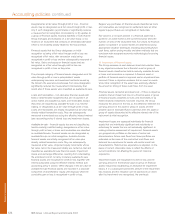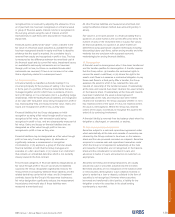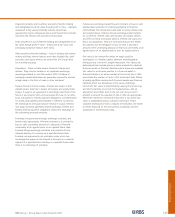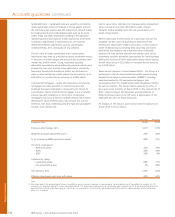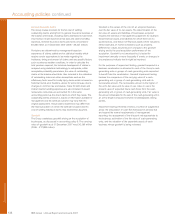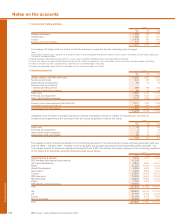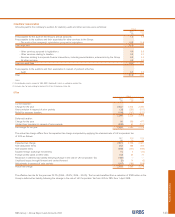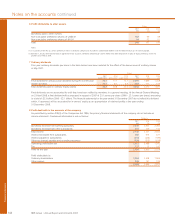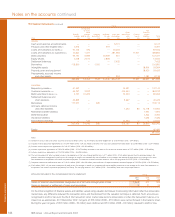RBS 2007 Annual Report Download - page 140
Download and view the complete annual report
Please find page 140 of the 2007 RBS annual report below. You can navigate through the pages in the report by either clicking on the pages listed below, or by using the keyword search tool below to find specific information within the annual report.
RBS Group • Annual Report and Accounts 2007
138
Accounting policies continued
Financial statements
General insurance claims
The Group makes provision for the full cost of settling
outstanding claims arising from its general insurance business at
the balance sheet date, including claims estimated to have been
incurred but not yet reported at that date and claims handling
expenses. General insurance claims provisions amounted to
£5,466 million at 31 December 2007 (2006 – £5,247 million).
Provisions are determined by management based on
experience of claims settled and on statistical models which
require certain assumptions to be made regarding the
incidence, timing and amount of claims and any specific factors
such as adverse weather conditions. In order to calculate the
total provision required, the historical development of claims is
analysed using statistical methodology to extrapolate, within
acceptable probability parameters, the value of outstanding
claims at the balance sheet date. Also included in the estimation
of outstanding claims are other assumptions such as the
inflationary factor used for bodily injury claims which is based on
historical trends and, therefore, allows for some increase due to
changes in common law and statute. Costs for both direct and
indirect claims handling expenses are also included. Outward
reinsurance recoveries are accounted for in the same
accounting period as the direct claims to which they relate. The
outstanding claims provision is based on information available to
management and the eventual outcome may vary from the
original assessment. Actual claims experience may differ from
the historical pattern on which the estimate is based and the
cost of settling individual claims may exceed that assumed.
Goodwill
The Group capitalises goodwill arising on the acquisition of
businesses, as discussed in accounting policy 5. The carrying
value of goodwill as at 31 December 2007 was £42,369 million
(2006 – £17,889 million).
Goodwill is the excess of the cost of an acquired business
over the fair value of its net assets. The determination of the
fair value of assets and liabilities of businesses acquired
requires the exercise of management judgement; for example
those financial assets and liabilities for which there are no
quoted prices, and those non-financial assets where valuations
reflect estimates of market conditions such as property.
Different fair values would result in changes to the goodwill
arising and to the post-acquisition performance of the
acquisition. Goodwill is not amortised but is tested for
impairment annually or more frequently if events or changes in
circumstances indicate that it might be impaired.
For the purposes of impairment testing, goodwill acquired in a
business combination is allocated to each of the Group’s cash-
generating units or groups of cash-generating units expected
to benefit from the combination. Goodwill impairment testing
involves the comparison of the carrying value of a cash-
generating unit or group of cash generating units with its
recoverable amount. The recoverable amount is the higher of
the unit’s fair value and its value in use. Value in use is the
present value of expected future cash flows from the cash-
generating unit or group of cash-generating units. Fair value is
the amount obtainable for the sale of the cash-generating unit in
an arm’s length transaction between knowledgeable, willing
parties.
Impairment testing inherently involves a number of judgmental
areas: the preparation of cash flow forecasts for periods that
are beyond the normal requirements of management
reporting; the assessment of the discount rate appropriate to
the business; estimation of the fair value of cash-generating
units; and the valuation of the separable assets of each
business whose goodwill is being reviewed.


